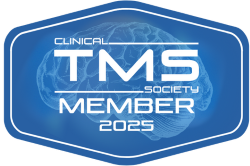
When it comes to negative thought patterns, many people struggle with identifying and reframing them into more positive or productive ones. The first step is usually bringing awareness to the negative thoughts because we cannot change what we aren’t aware of, right?
These irrational thoughts are often known as cognitive distortions or “thinking errors” which are rooted in biased perspectives we have learned to believe throughout life’s experiences. The process of reframing or restructuring these negative thoughts is known as cognitive reframing or cognitive restructuring. The premise of reworking our negative thoughts allows clients to challenge, adjust or substitute an unhelpful or irrational thought into one that provides a more compassionate outlook.
The Power of Cognitive Behavioral Therapy (CBT)
This technique of cognitive reframing lives under the umbrella of Cognitive Behavioral Therapy (CBT), a type of therapy that involves working on having control over our thoughts, feelings and behaviors. Two of the main types of cognitive distortions are known as “catastrophizing” or “all or nothing thinking.”
These distortions have similarities in the sense that they are more extreme or absolute ways of thinking. For instance, catastrophic thinking involves preparing ourselves for the worst-case scenario even if we KNOW it may not be the most probable outcome. That’s the silly thing about these distortions… we may sometimes know these thoughts are irrational, but we have a tough time believing anything else to be true.
Catastrophizing is when we worry if a loved one got into a fatal car accident after they haven’t answered our phone call. Our brain doesn’t tend to go to the more reasonable answers because it is trying to mentally prepare us for a worst-case scenario.
With “all or nothing thinking,” these distortions involve us using words such as “always,” “never,” “should/shouldn’t” and are usually rooted in underlying shame. For example, if a person said “I will never get a good grade on an exam” they are viewing the situation in a way that is limiting their belief of possible success in the future.
Embracing Neutrality: A Path to Challenging Cognitive Distortions
Challenging cognitive distortions will depend on the situation, and it may often involve some uncomfortable work. Many people have a difficult time turning their negative thoughts into more positive ones, so a great hack to bridge that gap is to see thoughts from a neutral perspective.
I am often a huge fan of utilizing non-judgement which involves non-criticism and a level of acceptance. If I were to have a thought that “I will never be good at my job,” a helpful way to reframe this thought into a neutral one would be “I am trying my best every day to be better at what I do.” This allows people to acknowledge they may not be where they want to be, but shaming themselves will only add an additional layer of stress.
It is not always comfortable to shift our perspective if we are used to acknowledging things from a more negative lens. By making an effort to reframe these responses into more neutral points, the more this will eventually become our automatic response.
This space of non-judgement or providing a neutral approach is also known as the “gray area.” “All or nothing” thinking is also referred to as “black and white” thinking which involves focusing on one extreme or the other.
Living in this gray area allows people to step into a new perspective that takes both extremes into consideration. Many people who struggle with cognitive distortions will not automatically see things from this middle ground. Individuals who struggle with their mental health believe these thoughts are facts and they should show up in life as if these thoughts are true.
Understanding Negativity Bias and the Role of Anxiety in Survival
Our brain has what is called a negativity bias which causes us to focus more on the negative aspect of things as a means for survival. Back in the days when humans were hunters and gatherers, we had to be constantly prepared for the worst because survival often depended on it, and the stakes were usually life or death.
This type of thinking is what kept many people safe at the time, due to preparing ourselves for obstacles. The purpose of our anxiety at the time was to give us the “fight or flight” response to either face the danger head-on or to flee from it. In today’s world, though we may not have to worry about fighting off wild animals on a daily basis, life presents us with many other threats that our anxiety still perceives as cause for concern.
The “fight or flight” response is perhaps something that feels like a true tangible threat, but oftentimes this situation will not cause us the level of harm we may be worrying about. Rather than shaming ourselves for this response, it is important to understand that a level of anxiety is necessary for survival.
If we lived in a world with no anxiety or “fight or flight” response, we would walk across the street without looking both ways or would jump out of airplanes without parachutes. A level of anxiety is healthy and necessary to keep us safe, but when it turns into these cognitive distortions that prevent us from living a life of happiness and fulfillment, this is where cognitive reframing is helpful.
Remember, these negative thoughts we have are patterns and what do patterns do? Patterns allow us to predict what will come next and anxiety LOVES certainty.
Embracing Discomfort and the Power of Thought Observation
It is important to understand that familiarity in situations does not always mean it is the most comfortable place for us. We could have a long history with our negative thoughts, which result in us being familiar with them, but this does not mean these thoughts are wanted.
It is very common for people who step out of their comfort zone and begin challenging their thoughts to feel a sense of discomfort. This is because the change is unfamiliar to them, and that unfamiliar environment is a breeding ground for anxiety. However, the more we avoid challenging these negative thoughts, the harder it will be to pull ourselves out of the mud.
I challenge you to reflect on if your thoughts are productive or holding you back. This is not to come from a place of shame or judgment, but a place of reflecting on the content of your thoughts and how to align them with your true purpose.
Amit Ray, an author and spiritual master known for his teachings on meditation, yoga, peace and compassion, once said, “you are not your thoughts; you are the observer of your thoughts.”
As an observer of our thoughts, we can learn to take a step back from dissecting the meaning of them, and rather acknowledge what is present. Acceptance does not mean we are agreeing with these thoughts, however it takes away the struggle of fighting against them.


